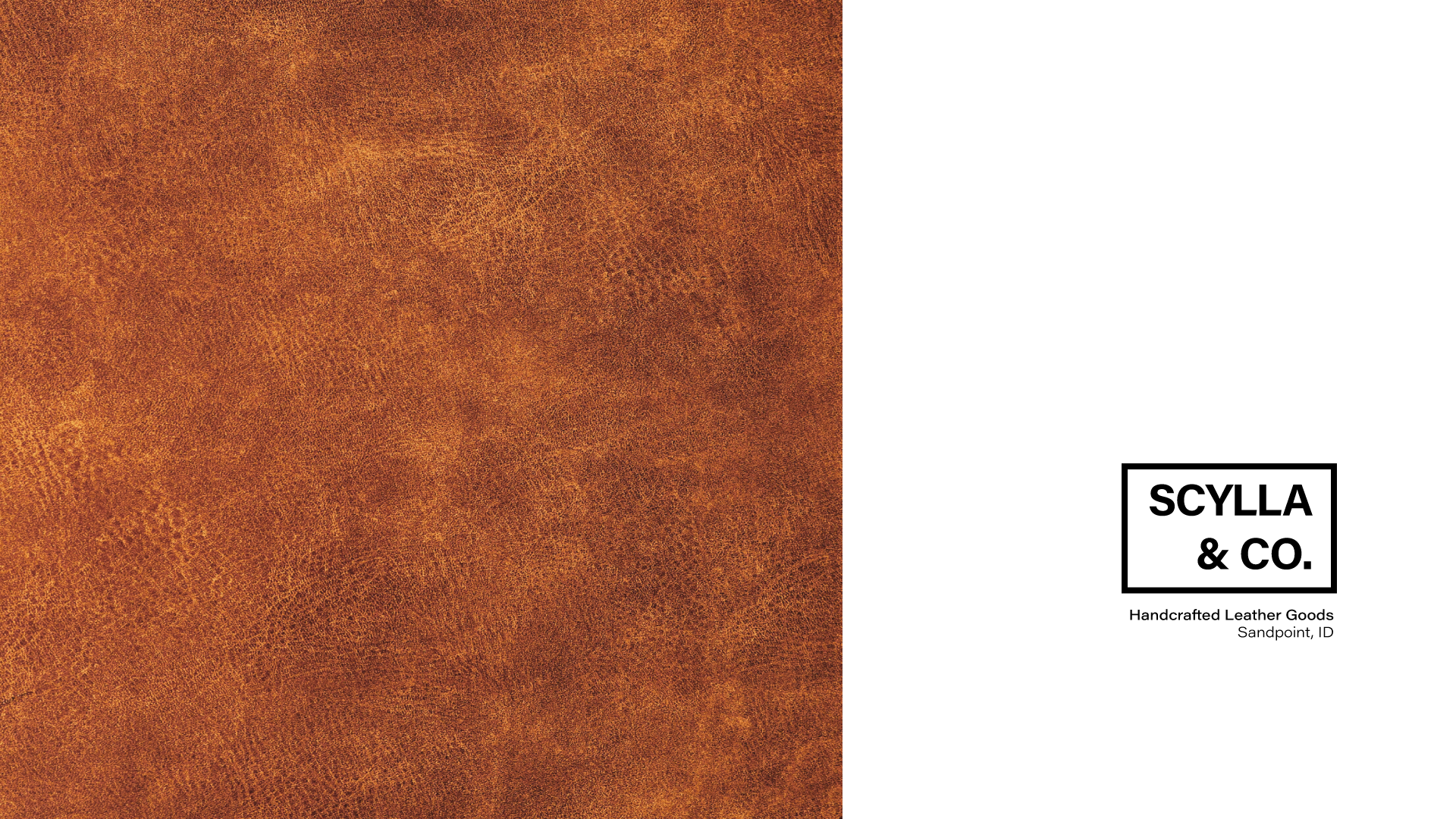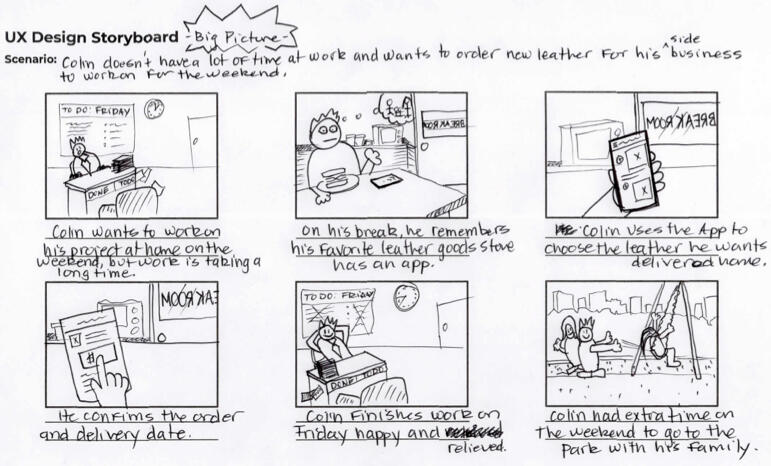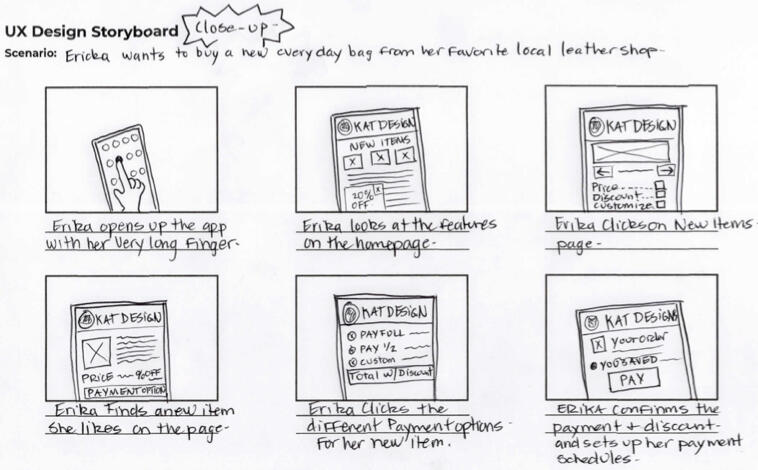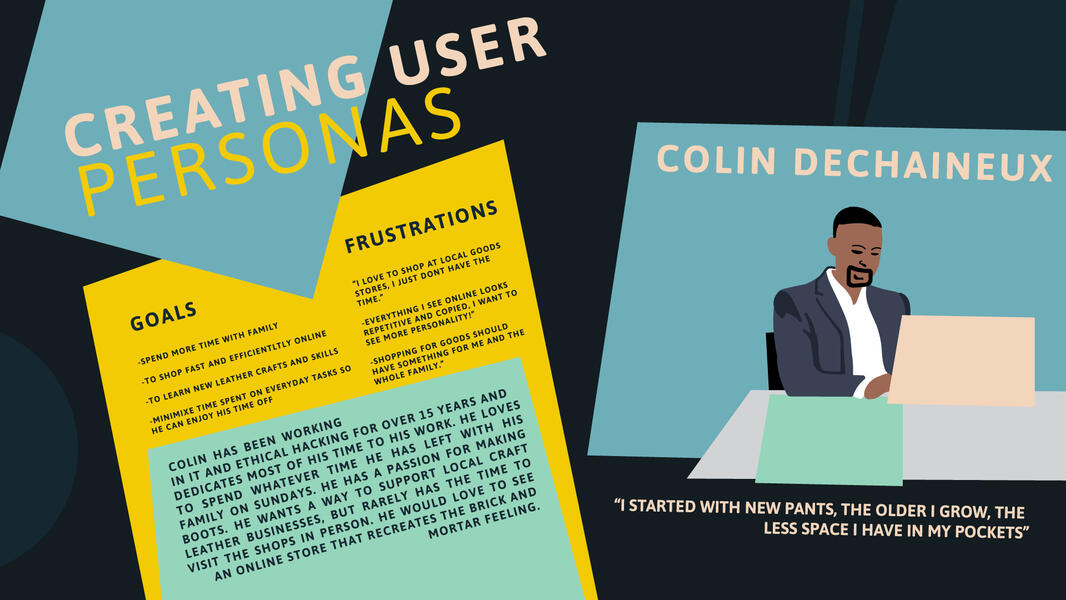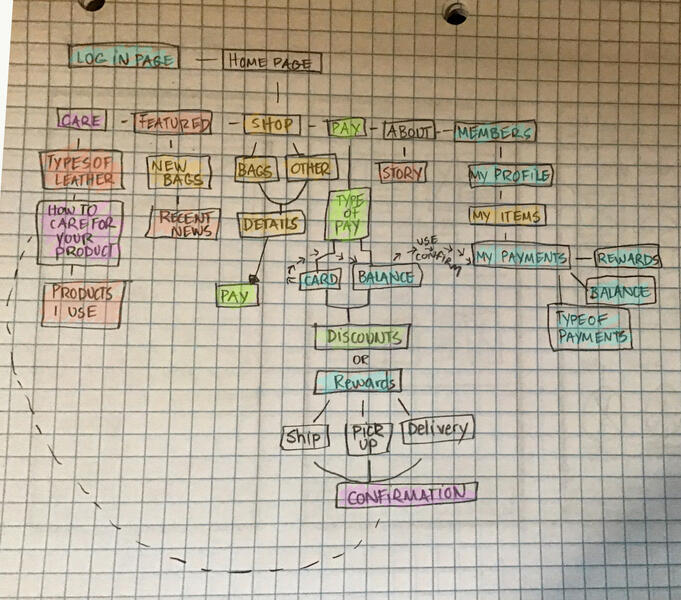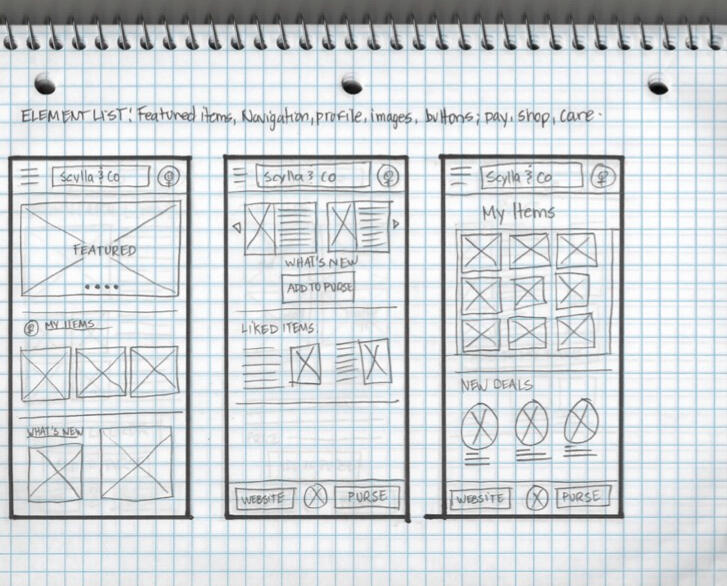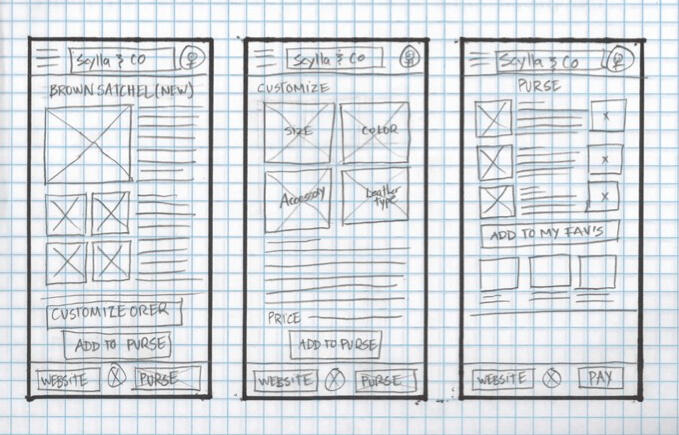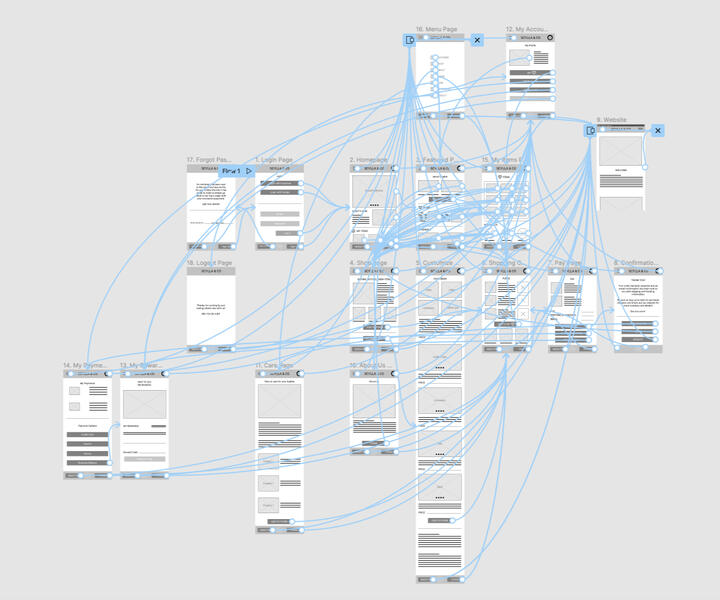
The story of
Scylla & Co.
My mom sewed a lot and she taught me. I was making Barbie doll clothes when I was still young enough to play with Barbie dolls. I always had a machine, and I liked it, but I didn’t sew a lot. When I was staying home with babies, I took a quiltmaking class with a neighbor, and it was just the perfect thing at that stage of my life, mostly because it felt like the ONLY thing I did that would stay done. Nothing else did: diapers, dishes, keeping the house picked up. But two pieces of fabric would stay sewed together and I made forward progress with every sewing session – it was magical.I enjoyed quiltmaking but how many quilts does anyone need? I made a few and gave away all but one as gifts, and went back to not sewing much. At one point, I picked up a used industrial sewing machine that could handle leather and heavier materials. I took a week-long metal engraving class in Kansas City. I SUCKED at it. I HATED it. So much. Everything about it. I watched some of my classmates twittering around, having fun and being excited about engraving and realized that if I was at a class about learning to sew leather or upholster furniture, if I were learning to operate that industrial sewing machine that was sitting in my garage, I would be acting just like them, excited and full of ideas about what to make next. Because I really did love to sew. There just weren’t that many things I wanted to sew out of fabric.I wanted it to be something more substantial, more long-lasting. Everyone needs bags and uses bags. I can sew a handbag or a tote bag out of cotton fabric, but that’s not very exciting to me. To sew a tote or purse out of beautiful leather, something that’s clearly handcrafted versus homemade-looking, that could serve its purpose for years, THAT would be exciting.-Sue Roe, Founder of Scylla & Co
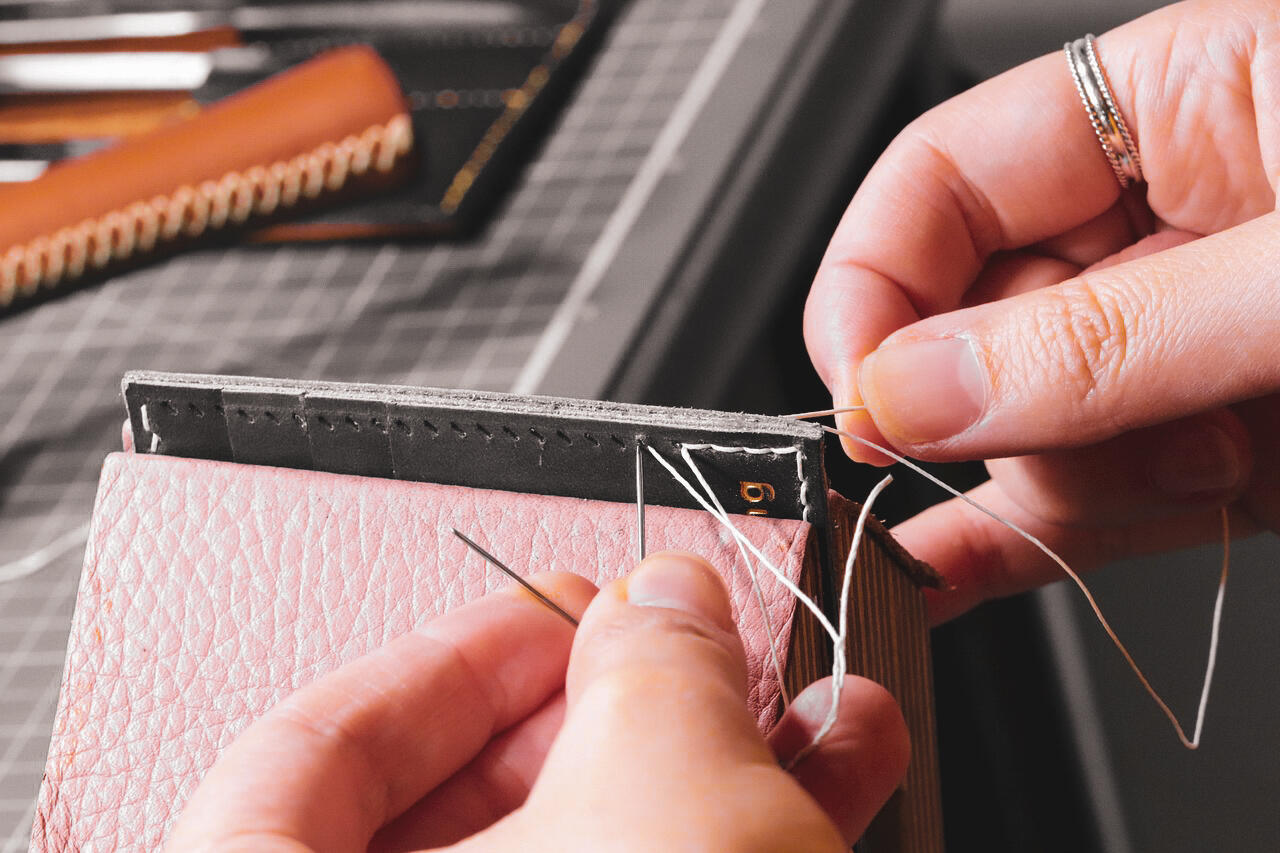
Deliverables
Art Direction, Branding, Packaging, Stationary, Logo, Web design
About
Scylla & Co. is an Idaho based local fashion merchant focused on creating high quality & hand-crafted fine leather goods.
Target Audience
People between the ages of 18-70 who are into leather accessories, outdoors, and strive for quality life-long accessories to accommodate their closest belongings. These type of people are often professionals, fashionistas and entrepreneurs from all walks of life.
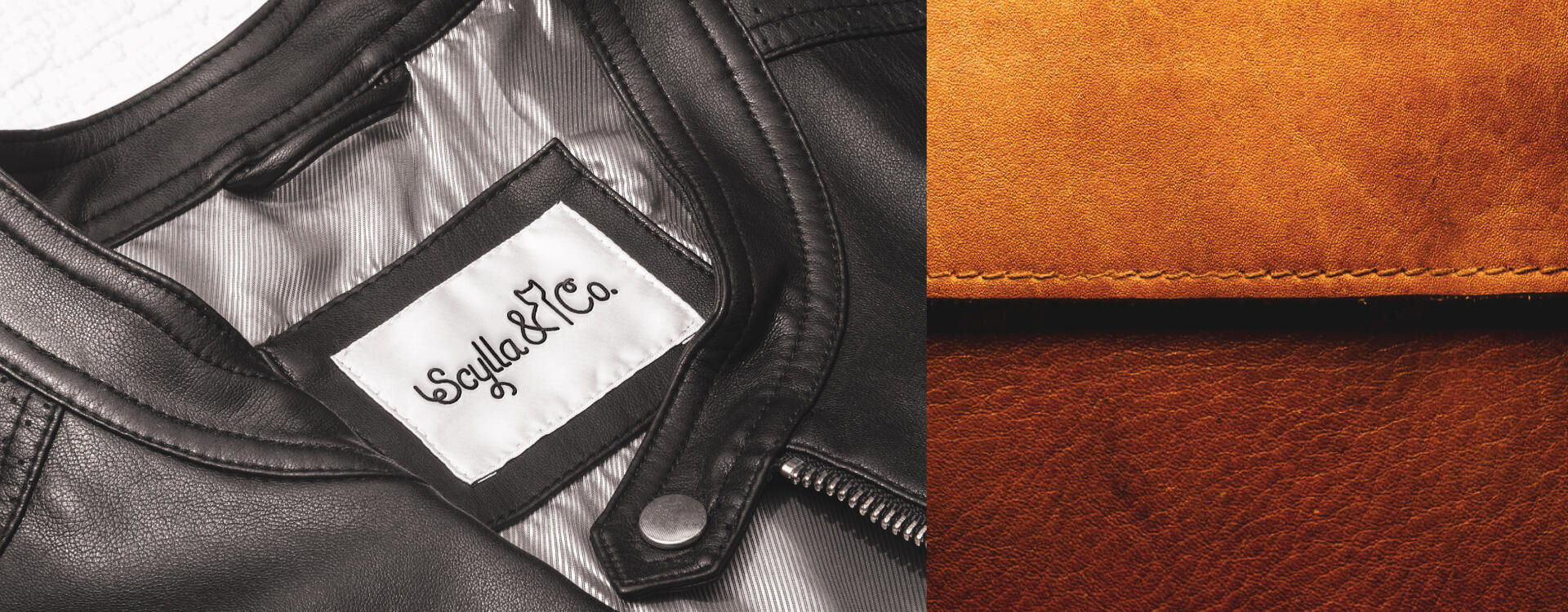
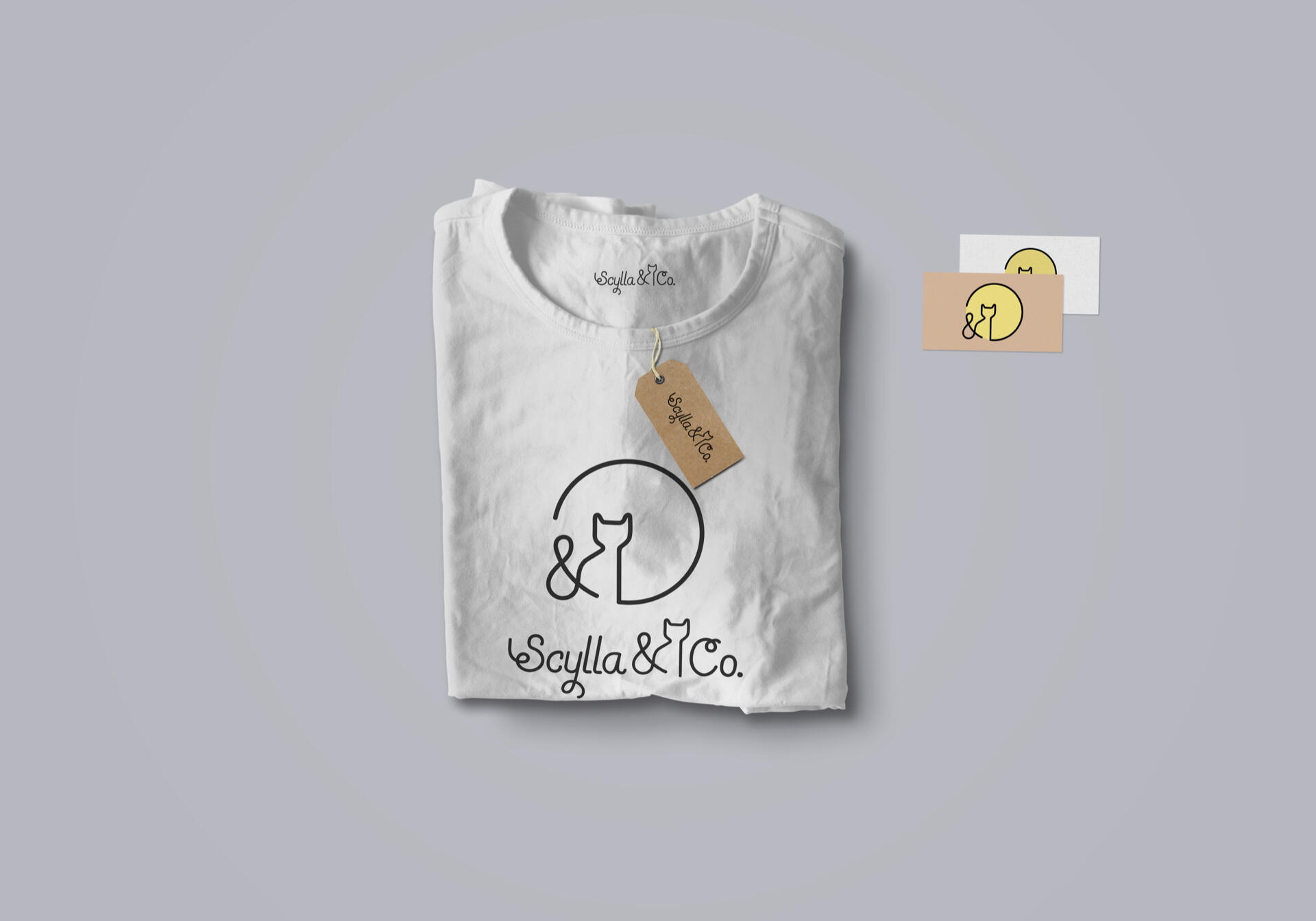
Branding & Identity Design
The Ask
To iterate and create a brand for a small business looking to expand beyond local in-person sales to offering products online through e-commerce and online stores. Name, logo, typeface, brand colors, guidelines and use case design assets.Brand Name: (Scylla & Co)
Location: Idaho, USA
Industry: Fashion – Leather Goods, Bags, and Accessories
Values: Craftsmanship, Heritage, Authenticity, Sustainability, and QualityBrand LogoConcept: The logo should embody the brand and company origin story while reflecting sophistication in a simple and timeless style. Use clean lines and minimalist design to ensure versatility across mediums (print, digital, embossing on leather).Icon: Incorporate symbolic elements such as the cat (Scylla)that inspired the design and brand name with silhouette, subtly intertwined in simple lines or elements like a leather stitch or strap to nod toward the brand’s product range. Also considering the heritage of the founder and what the brand stands for and represents. Consider a custom monogram logo as an alternative for a high-end, bespoke feel.
Tone
Heritage and Story-driven content about the craft, with an emphasis on traditional techniques and local materials.Luxury Meets Functionality. Emphasize the balance between premium materials and practical design. Highlight how Scylla & Co bags transition seamlessly from professional settings to weekend getaways.
Sustainability & Craft
Highlight environmentally friendly practices: Using ethically sourced leather, minimizing waste, and producing long-lasting, heirloom-quality products.Include a section or visual on the website dedicated to the craftsmanship process, showing the hands-on leatherwork, time, and skill that goes into each product.
Visual Identity
The visuals should bring the tactile quality of leather to life. Close-up shots of leather grain, stitches, and natural imperfections should be emphasized to highlight craftsmanship.Lifestyle Photography should feature the product in natural settings like the outdoors, to invoke an authentic, rugged and durable feel. Show the bags in everyday use, focusing on durability and versatility, whether in a work environment, travel, or outdoors.Use soft, natural light to enhance the warmth of leather tones, while maintaining clarity and sharpness to reflect quality.Warm, inviting, and earthy tones that reflect heritage, craftsmanship, and adventure.

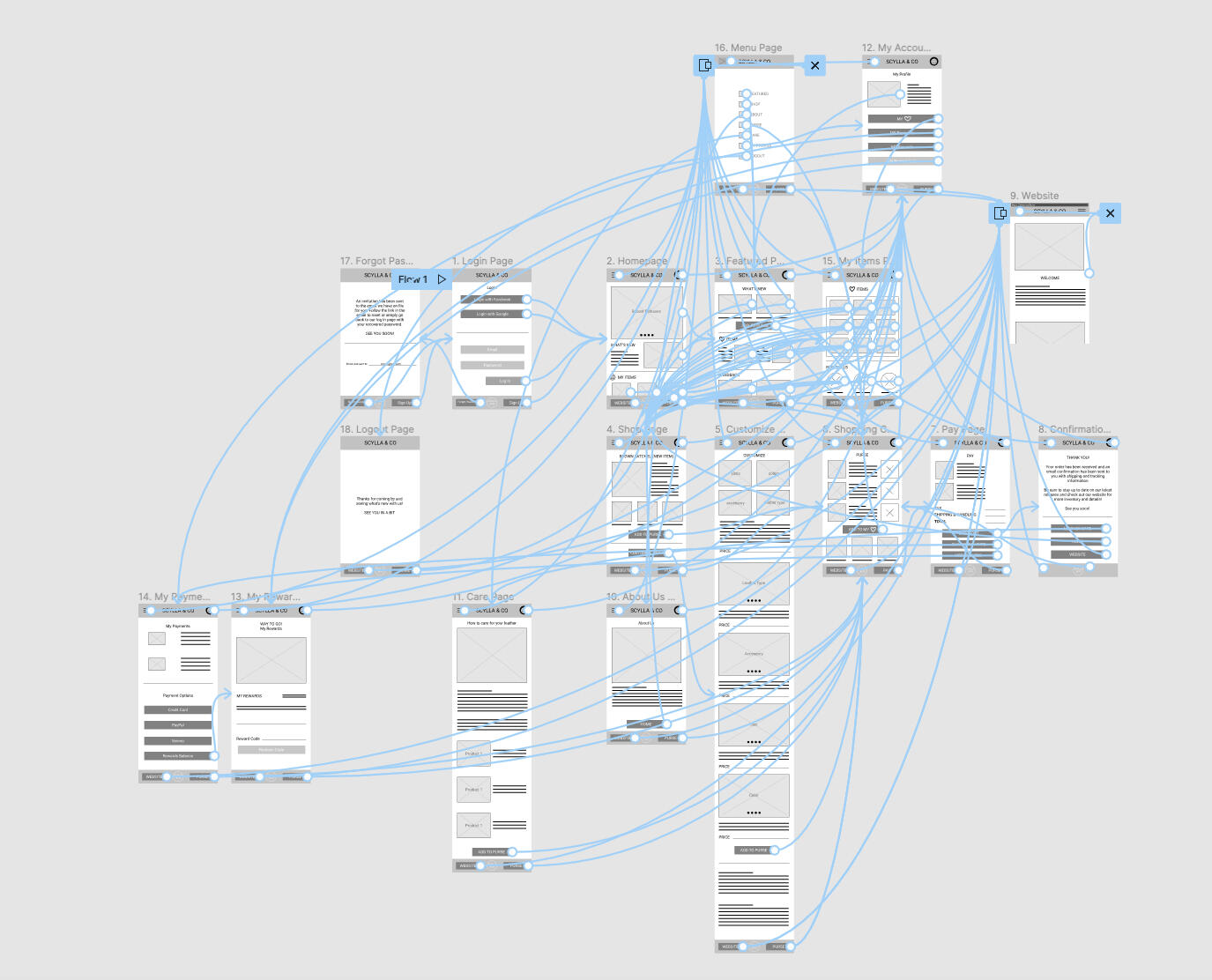
UI/UX
Building Value PropositionsThe product makes quality handcrafted leather goods from a local shop available to anybody. Customizable features for hardware, fabric types, colors, style and size. The store lets you sort items and options by configurable inputs (user wants custom 2” longer strap), therefore filtering items available in a list. Beautiful layout design. Affordable options, and a lifetime guarantee.The user should care because the product is personal, stylish, affordable and supports the local community. Quality is not jeopardized for the same prices offered elsewhere.Competitive Audit Goal: The goal of this competitive audit was to compare and contrast user experience on each of the competitors’ websites and apps.Key Competitors: The key competitors in this audit are Jenny N Design, Yukon Bags, Odin Leather Goods, Go Forth Goods, Brynn Capella and Portland Leather. Many of the larger competitors are not a key competitor because they are not smaller to medium sized businesses and have significantly more assets and finances than the direct competitors.Created full audit report Including:
1. Type and quality of competitors’ products
2. Competitor Position in the market
3. Competitors vibes and brand presence
4.Competitor Strengths
5.Competitor Weaknesses
6.Gaps/OpportunitiesUX Research StudyTitle: Usability study of local leather goods shopping appProject Background: We are creating a shopping app for a local leather goods shop, Scylla & Co. We are trying to figure out if user experience is easy, fast and enjoyable compared to shopping at the physical location. We would also like to see the pain points and issues that a user might encounter while trying to search, save and confirm a purchase on the app.Research Goals: Determine if users can complete the same tasks as they can at the physical store location. Determine whether the app is useful and efficient compared to the website.
Wireframes | Early Prototyping
Early research and functionality played a huge role in developing whether or not an app would be useful and helpful for Scylla & Co. Sketches, design sprints, user maps and other UX research methods were used to develop the prototypes. What follows is a snippet of the plan for building and developing an app.UX Research Study | PlanResearch Questions
● Can the user find the item they are looking for in the app?
● How long does it take for a user to find and purchase an item in the app?
● What can learn from the time spent on the app, about which items users find the most appealing, popular and purchase most?
● Are there any parts in the app where the user gets stuck?
● Do the users want more features and actions included on the app?
● Do users find the app easy or difficult to use?KPIs
● Time on task
● Use of navigation vs. search
● Conversion rate
● System Usability Scale (SUS)Methodology
● Unmoderated usability test
● Location: United States, remote (each participant will complete the study in their own location)
● Date: Sessions will take place on Sept. 15 & 16th from 9am-10pm (PDT)
● Length: Each session will last from 15-20 minutes based on listed tasks (see script below)
● Compensation: %OFF from Scylla & Co, Freebie giveaways and raffle for free leather goods.Participants
● Participants are all individuals who shop for leather goods, bags locally and online and have school, work, or priorities for most of the day.
● Five males, five females and two non binary individuals between the age of 18-75 who actively seek leather based goods and servicesThe Script
During the course of the unmoderated usability study
A list of tasks will appear on the users device screenTask 1: Login, Search and find an item that you would like to purchase
Task 1 follow up: How easy was the process to find an item you liked? Is there anything you would change about the search process?
Task 2: Select the item you would like to purchase and add it to your cart.
Task 3: Confirm purchase of product and checkout process
Task 3 follow up: How easy or difficult was this task to complete? Is there anything you would change?
Task 4: From the home page, locate and change your payment info
Task 5: From the home page find or search for an item you want to customize, add custom accessories (if applicable) and add these customizations into your saved items.
Task 6: Navigate to your profile page and add reward points.
Task 6 follow up: How easy was the flow of navigating from page to page? Which task, if any, from the following (4,5, and 6) were the easiest and most difficult to complete? What specifically would you change about the process?
Task 7: From any page on the app, find and navigate your way to logging out and closing the app.
Task 8: How do you feel about using this app? Would you rather use the app or the website for purchasing? What are the advantages and disadvantages of the app for you? What did you like and dislike about it?After the unmoderated usability study
All participants will complete a System Usability Scale survey● Participants will score the following 10 statements by selecting one of the responses that range from “Strongly Disagree” to “Strongly Agree.”
- I would use this app over a website.
- I think the app is easy to use.
- I find the app unnecessarily complex and confusing.
- I need the support of a technical person to be able to use this app.
- I find the app easy to navigate.
- There is inconsistency within the app.
- I would recommend this app to a friend of mine.
- I found it easy to pay and check out my items.
- The app was consistent in portraying the company brand and style of Scylla & Co.’s products.
- I enjoyed navigating and searching for items throughout the app.

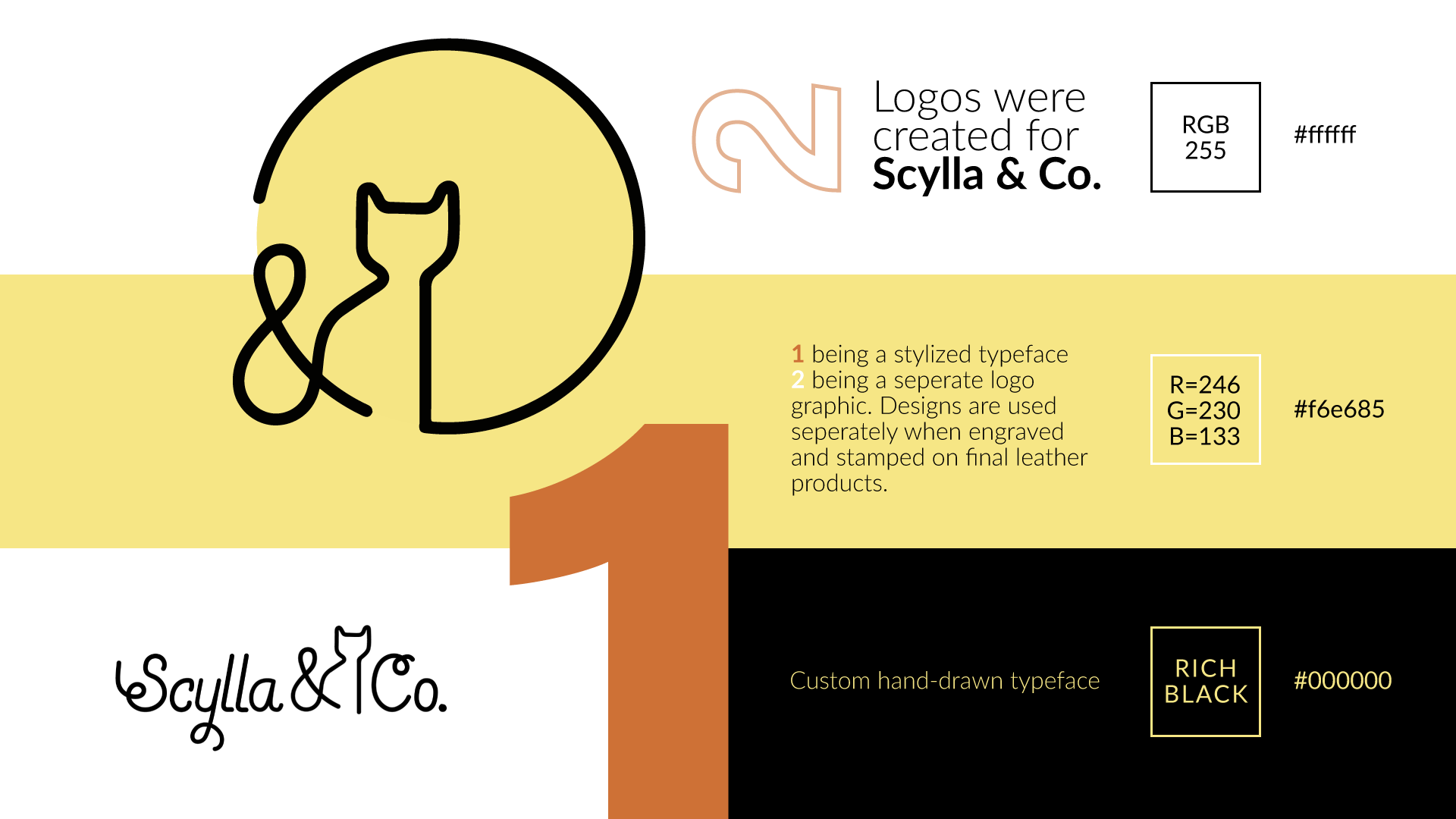
Custom Typography & Color
TypographyWe chose a sans-serif for a modern, clean look to compliment the simplicity and elegance of the brand voice. Handcrafted font styles could also be used and explored to reflect craftsmanship.Color Palette: Earth tones such as deep browns, warm tans, forest greens, and metallic accents (bronze or gold) for luxury. This palette complements leather textures and natural materials, connecting the brand to Idaho’s rugged wilderness and balancing with warm hues to compliment the brand and warm feeling of the founders lifestyle, principles and colors.Accent Typeface: A cursive or hand-drawn font for small accents, promotional banners, or product descriptions to infuse personality and uniqueness.Color PalettePrimary Colors:
- Muted Yellow (to symbolize leather, warmth, and durability)
- Rich Black (echoes modern simplicity and focuses on the product rather than color)
- Cream/Off-White (for a modern, minimalist backdrop, balancing out bold tones)
- Gold/Brass (luxury accent, ideal for metallic finishes on hardware)
Accent Colors:
- Slate Grey (for a modern, sleek touch in UI design)
- Charcoal Black (for elegance and contrast)

Further Explorations
Website Structure and LayoutHomepage: A visually driven design with a large hero banner showcasing signature leather pieces against an Idaho backdrop. Key sections include:
- Introduction to the brand's story (with images of the workshop, artisans, and the craftsmanship process)
- Featured products or collections
- Testimonials or press mentions (emphasizing authenticity and quality)
- Call to action for shop now, featured lookbooks, or newsletter sign-upProduct Pages: Focus on product imagery (multiple angles, close-ups, lifestyle shots). Each product page should highlight:
- Detailed descriptions (material, functionality, origin of leather)
- Craftsmanship features (hand-stitched, locally sourced materials, etc.)
- Optional customization (if available, such as monograms or color options)About Page: This page should focus on the brand’s origin story, connecting with Idaho’s heritage and Sue's story and emphsize her' passion for craftsmanship, local roots, and her journey in creating high-quality leather goods.
Blog/Journal: A section dedicated to lifestyle content—how to care for leather, behind-the-scenes posts about product creation, or styling tips.Icons and User InterfaceIcons: Subtle, minimalist icons that reflect the product categories (handbags, wallets, accessories) and navigational elements. Keep them geometric and in harmony with the brand’s design aesthetic and simplicity.
Buttons and CTAs: Rounded corner buttons, with leather-textured backgrounds for subtle emphasis, and gold or brass tones for CTA text (like “Shop Now” or “Discover the Collection”).
Interactive Elements: Hover effects that change colors to deeper browns or gold when interacting with buttons, creating a premium tactile feeling.Packaging and Presentation DiscoveryTissue Paper: Branded with a simple logo or a repeating pattern of the brand’s icon in soft, muted tones.
Tags and Labels: Tags should feature the brand logo embossed or printed on kraft paper for a rustic yet premium feel. Include short product descriptions or personal notes and recommendations from the founder, Sue.
Shipping Boxes: Simple, sturdy boxes with the brand's logo and a touch of elegance (e.g., a wood printed graphic, a wax seal or a ribbon) for an elevated unboxing experience.
